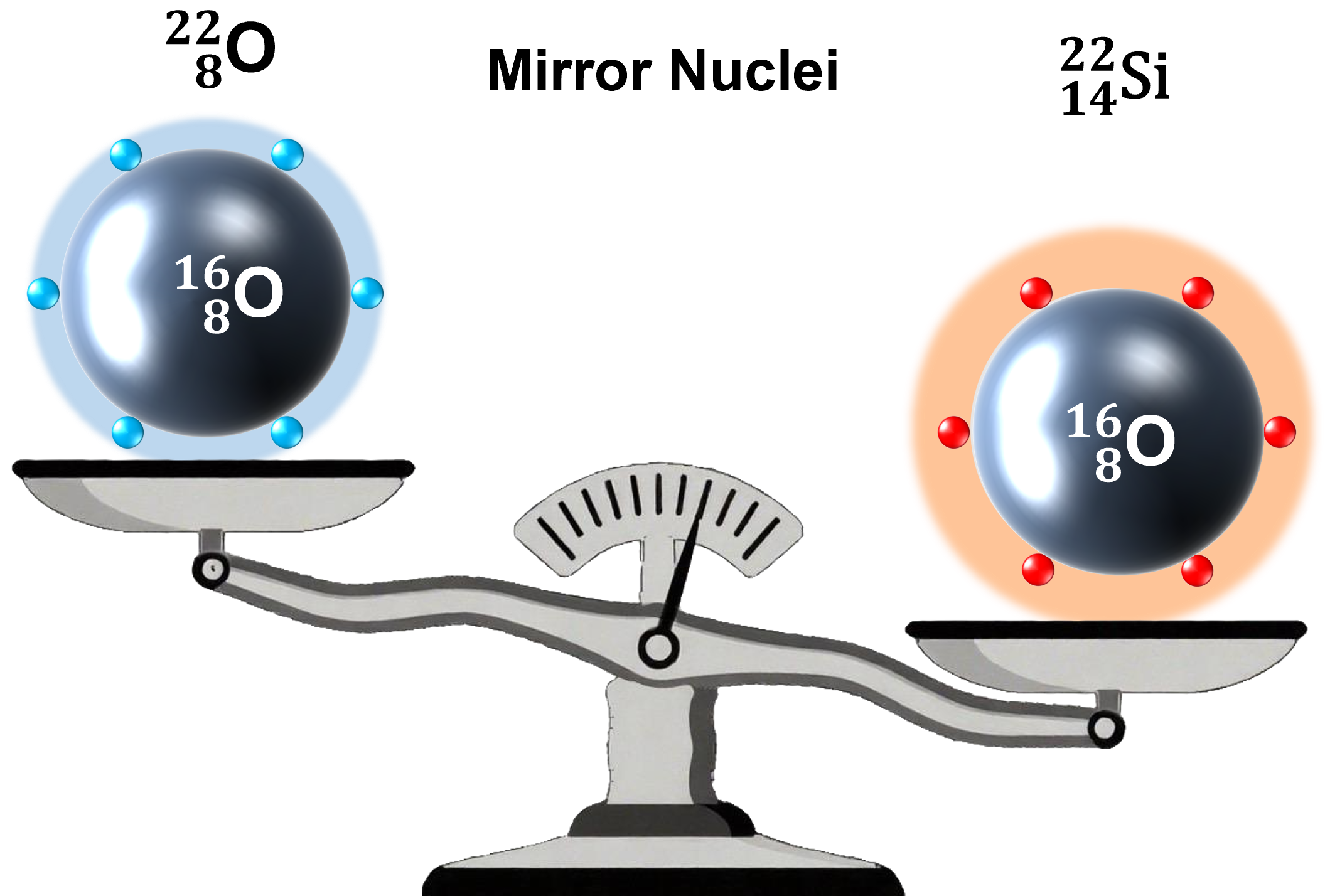
"Magic numbers" in nuclear physics identify specific numbers of protons or neutrons that lead to especially stable nuclei. Recognizing these numbers helps scientists better understand the structure of nuclei.
The magic numbers for stable, long-lived isotopes have long been known, but the magic numbers for exotic, short-lived isotopes are less well understood. By studying these rare cases, researchers can gain deeper insight into the nuclear "building code" under extreme conditions. This, in turn, improves our understanding of how elements formed in the Universe and sheds light on the behavior of the nuclear force.
As part of this effort, researchers from the Institute of Modern Physics (IMP) of the Chinese Academy of Sciences have precisely measured for the first time the mass of an extremely short-lived and neutron-deficient nucleus, silicon-22, revealing that the proton number 14 in silicon-22 is a new magic number.
Their findings were published in Physical Review Letters on July 2.
Atomic nuclei are composed of protons and neutrons. When the number of protons or neutrons reaches a "magic number", such as 2, 8, 20, 28, 50, 82, or 126, the nucleus becomes more stable. Maria Goeppert Mayer and J. Hans D. Jensen explained this phenomenon in the 1940s–1950s through the nuclear shell model, for which they were awarded the 1963 Nobel Prize in Physics.
In recent years, studies of exotic nuclei far from the valley of stability—the region on a nuclide chart where stable isotopes are found—have identified new neutron magic numbers, such as 14, 16, 32, and 34. However, new proton magic numbers remain rare in experimental observations.
Previously, scientists discovered that in oxygen-22 (14 neutrons and 8 protons), the neutron number 14 exhibits magic characteristics. Based on nuclear mirror symmetry, theorists predicted that proton number 14 should also be a magic number in its mirror nucleus, silicon-22 (8 neutrons and 14 protons). However, generating and measuring silicon-22 is extremely challenging due to its low yields and short half-life, leaving this theoretical prediction unverified until now.
Using improved Bρ-defined isochronous mass spectroscopy, researchers at IMP successfully measured the ground-state mass of silicon-22 at the Cooling Storage Ring of the Heavy Ion Research Facility in Lanzhou. They also improved the mass precision of their previously measured silicon-23 by nearly sevenfold.
Their results show that silicon-22 has a positive two-proton separation energy—in other words, it doesn't spontaneously lose two protons. This confirms its status as a proton drip-line nucleus without two-proton radioactivity, thereby resolving a long-standing debate in nuclear physics.
Using the new mass value, the team calculated the proton pairing energy of silicon-22 and compared it with the neutron pairing energy of its mirror nucleus oxygen-22, revealing the new proton magic number 14. This finding is supported by the Gamow shell model.
Although silicon-22 exhibits double-magic properties similar to oxygen-22, the study found that its proton spatial distribution is more spread compared with the neutron distribution of oxygen-22, exhibiting a slight symmetry breaking.
This study deepens our understanding of exotic nuclear structures and provides new insights into nucleon interactions and the existence of extremely exotic nuclei.
This work was supported by the National Key R&D Program of China, the Strategic Priority Research Program of CAS, and the Youth Innovation Promotion Association of CAS, among others.

Structural schematic diagram of silicon-22 and its mirror nucleus oxygen-22. Through mass measurements of silicon-22 combined with theoretical calculations, researchers have revealed that silicon-22 possesses a double-magic structure similar to that of oxygen-22, while also exhibiting slight symmetry breaking with a more extended proton spatial distribution. (Image by IMP)

86-10-68597521 (day)
86-10-68597289 (night)

52 Sanlihe Rd., Xicheng District,
Beijing, China (100864)

